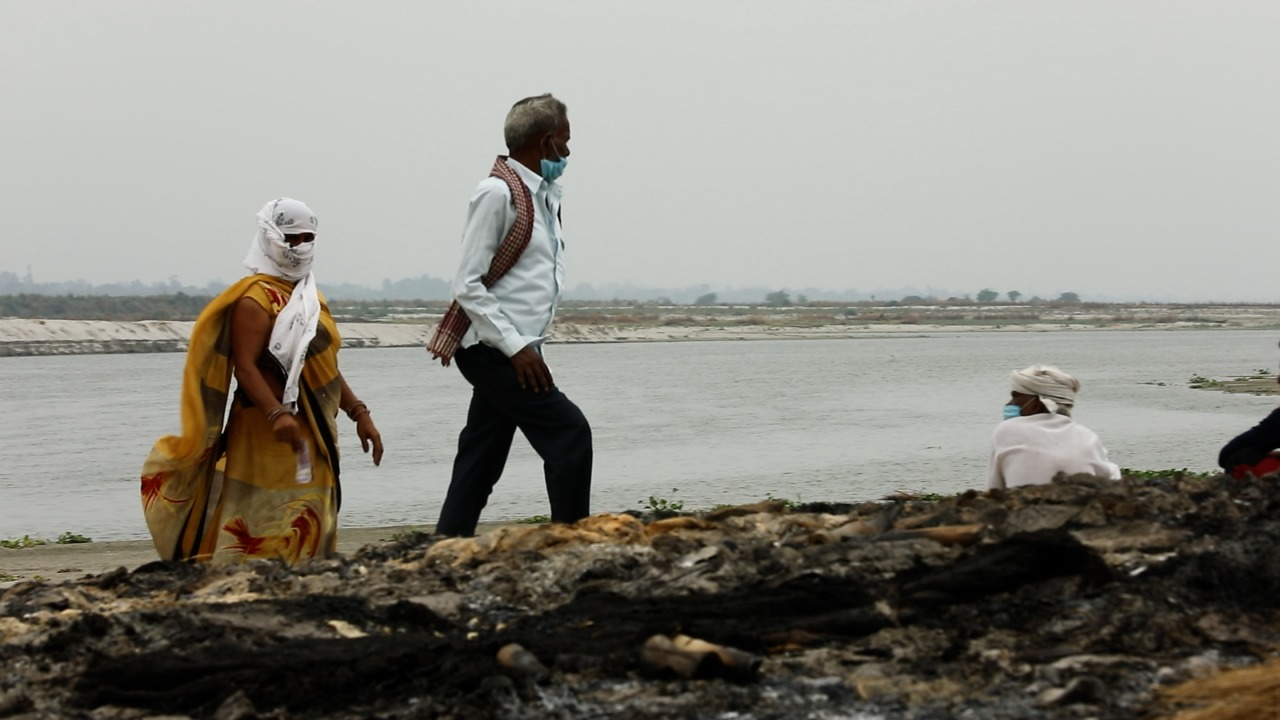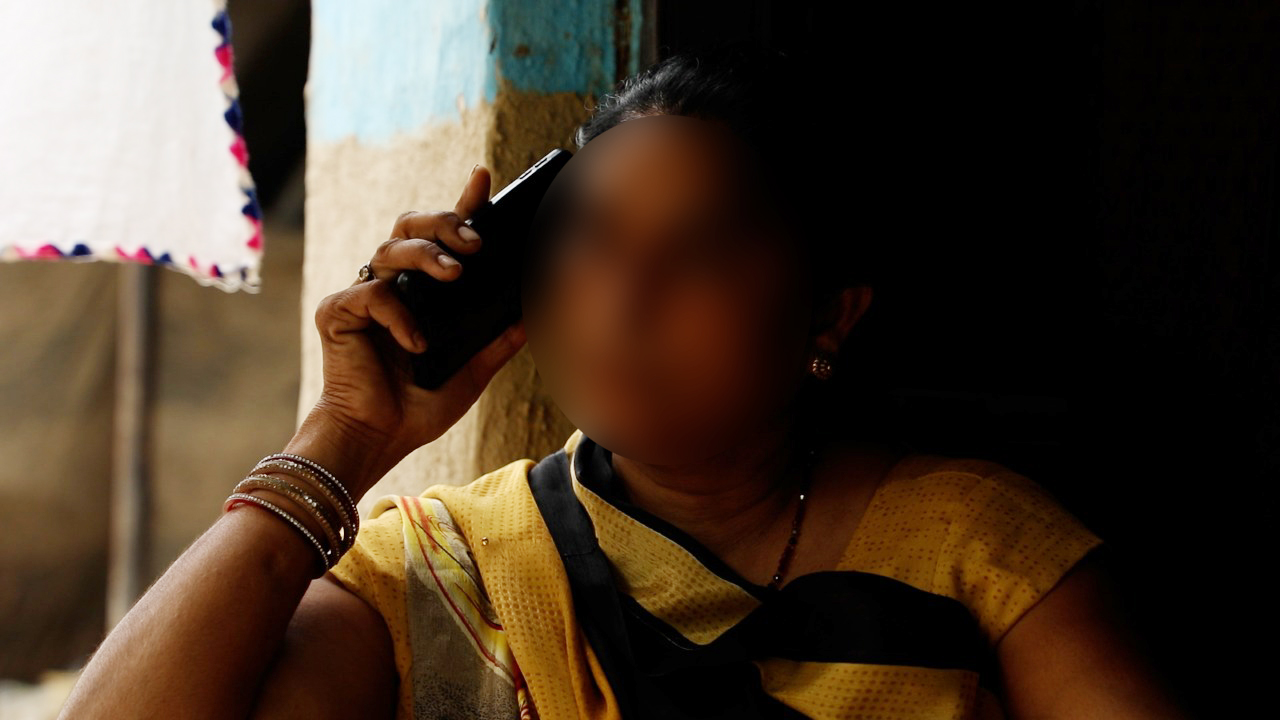Married at 11, widowed at 26. Funeral rites organiser at the Ganga ghat for 20 years
Sushma Devi courageously works in a traditionally male-dominated bastion to supervise the last rites on the banks of the Ganges in Unnao, Uttar Pradesh. Ever since the second wave of COVID-19, she has had to spend longer hours at the ghats as the dead line up.

Unnao, Uttar Pradesh
Sitting under the shade of a makeshift shelter, adjusting her white dupatta over her head, Sushma Devi gazed at the Ganges River in front of her, and said, under her breath: “Maata Rani sab jaanti hain (goddess Ganga knows everything).” Behind her burnt several pyres.
Sushma was only 11 years old when she was married off to 15-year-old Santosh Kumar, whose traditional occupation was performing last rites (panda, a priest who performs prayers for the last rites) at Balai ghat in Unnao. By the time she was 26 years old, and a mother of two young sons, she was widowed.
“No one from either my mother’s or my husband’s side helped me out. I had to feed my sons. Since I knew a little about performing last rites, I took it up,” said the 42-year-old, who gathered up the courage to work in a traditionally male-dominated bastion and became a woman ‘panda‘. “You see, I am uneducated. I had no other option,” she shrugged, as she dusted the river bank sand off her sari.
Sushma lives five kilometres from the Ganga ghat in a village called Hadha in Unnao district, about 80 kilometres south west of the state capital Lucknow. For the last 20 years, she has been performing last rites at the ghat.
The ghats on the Ganges river have been making news for a couple of days now. Dead bodies have been found floating in the river and hundreds more are being cremated and buried on its banks. Many of them are suspected to be victims of the second wave of COVID19 across the country.

Also Read: Graves by the Ganga: a surge of COVID deaths and moneyless families burying, not cremating their kin
Sushma has also been busier than before and her days are unusually long. “I wake up at five in the morning. I clean, bathe, cook for the day, and set out for the shamshan ghat (cremation ground) at about ten,” Sushma, who lives alone in a one-room house, told Gaon Connection. A few years after her husband died, her younger son died too. Her older one is married and lives with his wife in Punjab.
“I made kaddu subzi (pumpkin vegetable) and rotis this morning. I ate some of it and kept the rest for my meal at night. I eat the leftovers when I go back home if I feel like it, otherwise go to bed,” she said, and added, “I don’t eat anything when I am here at the ghat. Nothing other than water.”
When Gaon Connection met her on May 16, before noon, she had already supervised one cremation. She said two other women at Balai ghat do the same job.

Also Read: Rural Uttar Pradesh in a fever of trouble
“Today I got four hundred rupees from a family. Sometimes it is no more than a hundred and fifty or two hundred,” she said. But on some busier days, she made up to Rs 1,500, she said.
“There is no fixed amount I get paid for doing my job. I know exactly what it feels like to lose a family. I am not going to haggle about money with someone who has just lost a near and dear one,” she said.
When Gaon Connection asked Sushma about why she chose to work at a cremation ground, something unusual for a woman, she smiled, “I am not the only woman. You will find many others like me, destitute, abandoned, widowed, who are doing this work to feed their families.”
Also Read: There’s more to India’s COVID19 death toll than meets the eye

When her husband died, Sushma decided working with the dead was a better option than working as a labourer for someone else. “I am a woman. I have to think of such things. I had my sons to bring up, respectably. I couldn’t afford to have people point a finger at me,” Sushma continued.
When she first started doing this work, she was scared, Sushma recalled. “Seeing dead bodies all day long, performing their last rites… For a long time I couldn’t shake off the image of the burning bodies and the sound of wailing relatives. So many young people, children…But Maata Rani gave me the strength,” she said.
“I don’t feel a thing now.”
Hopelessness, helplessness and poverty taught me to be strong, she said.
“Maata Rani has stood by me all along. I know she is with me till I cross over too,” she concluded.
Written and edited by Pankaja Srinivasan.

